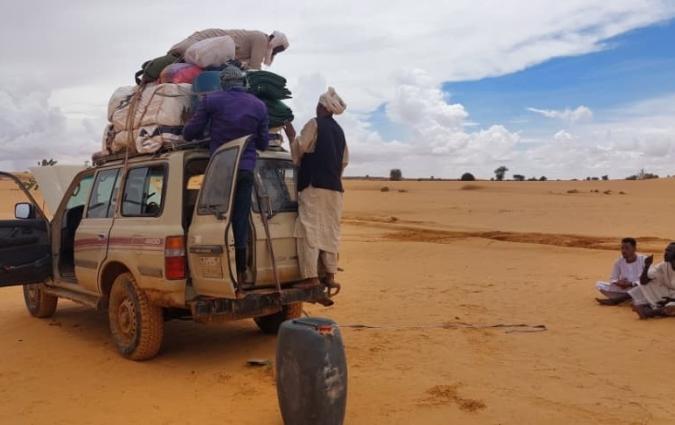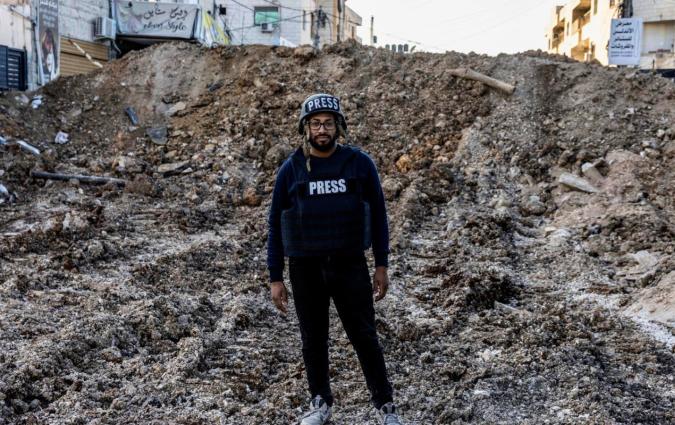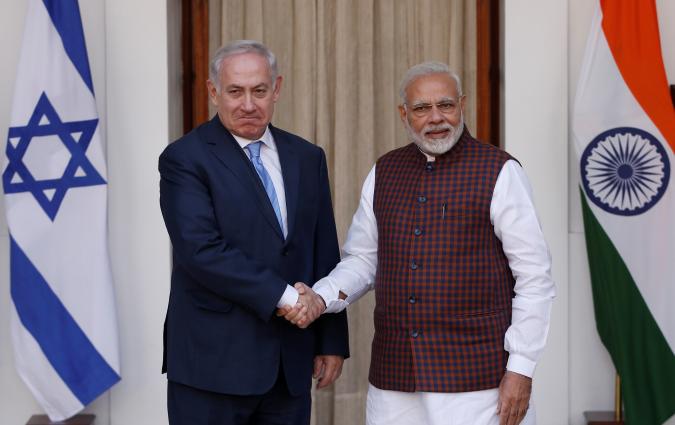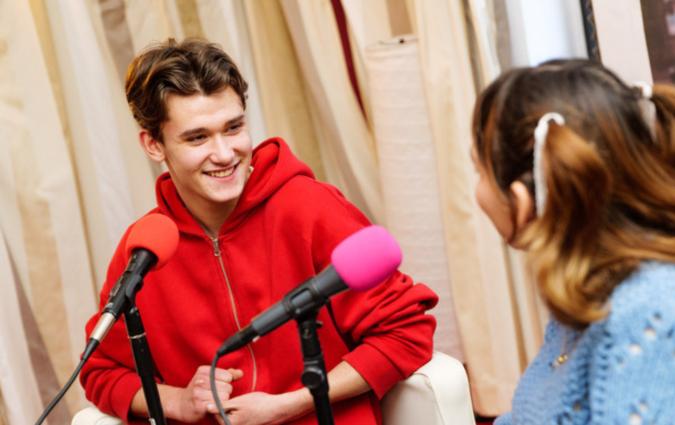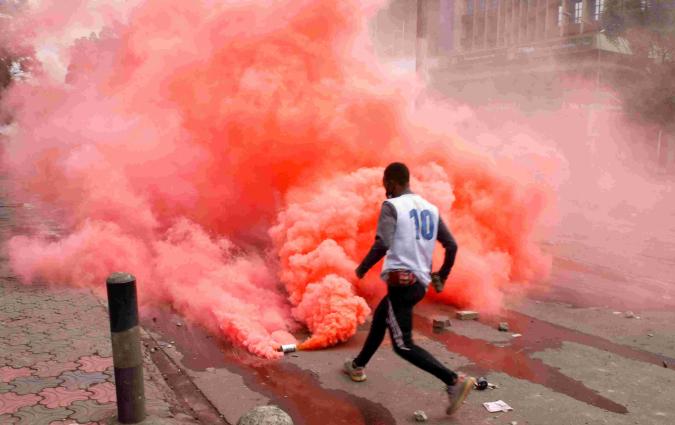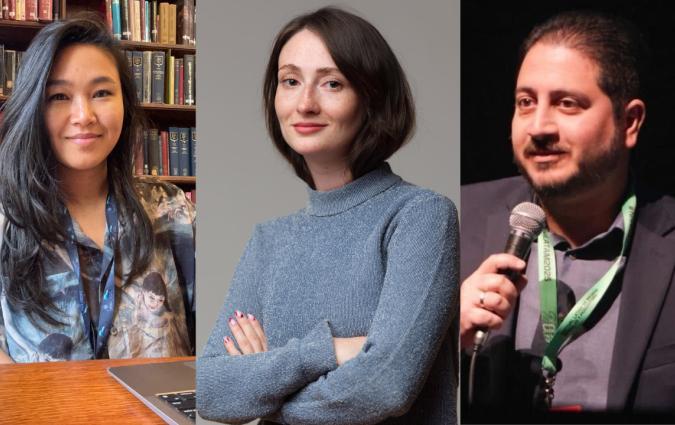Displaced by war, Sudanese filmmakers found a new way to tell the story
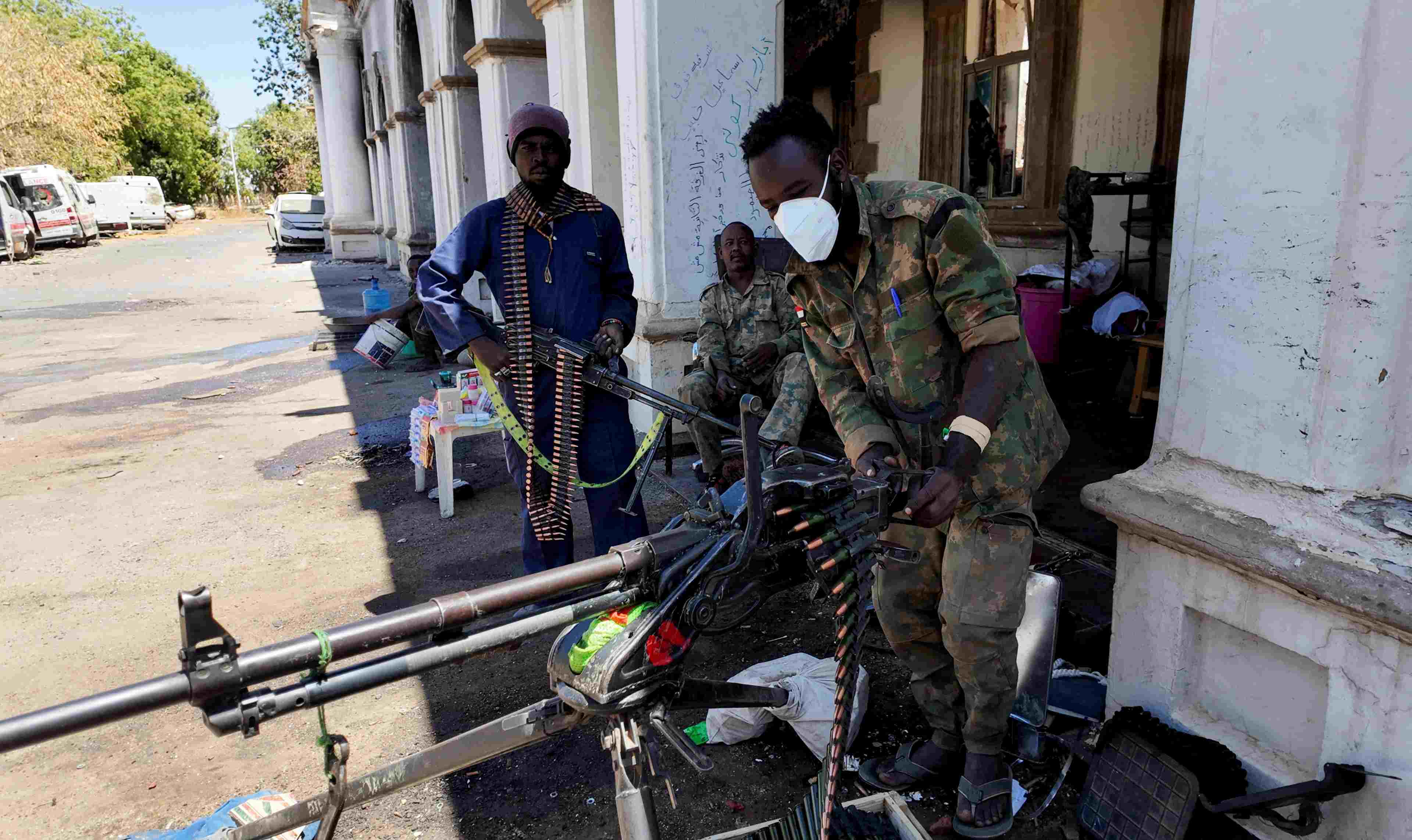
Sudanese army members stand at the presidential palace after the Sudanese army announced it had taken control of the building in the capital of Khartoum, Sudan, on March 24, 2025. REUTERS/El Tayeb Siddig
When war broke out in Sudan in April 2023, a group of young Sudanese filmmakers were forced into exile. They also had to rethink their film.
Khartoum (2025) had started out a year earlier as a collection of quiet observational sketches of ordinary lives in the capital. Now, it had to be reimagined as both the storytellers and their subjects scattered across borders.
The film follows five Khartoum residents: street boys and best friends Lokain, 12, and Wilson, 11; single mother and tea vendor Khadmallah, 27; civil servant Majdi, 45; and Sufi Rastafarian activist Jawad, 30, a resistance volunteer who rode a motorcycle and protested for a civilian government. Their daily lives, navigating streets first shaped by economic struggle and then by conflict, anchor the story.
Yet the protagonists’ personal stories unfold against a much larger backdrop. The conflict between the Sudanese Armed Forces (SAF) and the Rapid Support Forces (RSF) has displaced over 12.4 million people, including 3.3 million who fled to neighbouring countries, according to the UN. Two years of war have brought famine, disease, and the collapse of the health system, turning survival into a daily fight.
This catastrophe did not emerge from a vacuum. The film subtly tracks the period following the 2021 military coup, which derailed a peaceful revolution that in turn had ended 30 years of dictatorship. In this fragile and tense environment, the protagonists were already grappling with dimming hopes for a better future as the city burned with demonstrations. No one yet knew that the political upheaval was merely a prelude to a far more devastating civil war.
The film responds to this collapse with intimate reconstruction. Shot partly in Sudan and partly reconstructed in Nairobi, it blends vérité scenes – a documentary style capturing raw, unscripted moments – with reenactments, voiceovers, and dreamlike visuals. The filmmakers tackle the question of how to honour trauma without exploiting it, echoing the ethical dilemmas facing journalists covering conflict.
Reshaping the story in exile
The project began in 2022 and was devised in Khartoum by the film’s creative director, Phil Cox from Native Voice Films, with Talal Afifi, producer at Sudan Film Factory, along with the support of Ayin Network. Cox launched an open call for Sudanese filmmakers, and Ibrahim Snoopy Ahmad and Rawia Alhag were among those selected, spending weeks developing short stories.
“Just when we were about to finish the film, war broke [out], and we had to restructure it,” Snoopy said. The original concept was straightforward: short stories capturing daily life in Sudan. But when the fighting began, both filmmakers and subjects became refugees, eventually reuniting in Nairobi, where they lived side by side for months.
“At the beginning, we all lost hope,” Alhag recalled. “Everyone was scattered, and life was so hard. But when we gathered again in Kenya, it gave us a mission: to finish the film, and to tell what happened in Sudan.”
Even before exile, a high-end camera on the streets of Khartoum could invite suspicion or worse. The danger wasn’t just from authorities. Eyad Husham, a Sudanese investigative journalist now based in Nairobi, discovered that documenting both sides of the conflict made him a target from all directions.
“People couldn’t understand,” he said. “SAF supporters thought I was paid by RSF, RSF supporters thought I was paid by SAF.” In a polarised environment where neutrality is treated as betrayal, the filmmakers’ focus on civilian lives rather than taking sides became both an ethical stance and a survival strategy.
The crew relied on iPhones, discreet enough to capture unguarded moments, such as the boys wandering a market and pausing to admire clothes, a scene Alhag remembers as both ordinary and impossible. And when war erupted and the directors scattered with their subjects, the project itself became both lifeline and burden.
“It gave us hope,” Alhag said, “something to hold onto when everything else had collapsed.”
That delicate act of reshaping the story has drawn attention on the festival circuit. Kenyan film marketer and critic Gloria Nkatha, who reviewed Khartoum while attending the Durban Talent Press programme, said her first reactions were astonishment and admiration at how the filmmakers managed to “tell a story without necessarily being there.”
To fill the gaps, the filmmakers turned to the Sudan Memory project, a rich digital archive of rare cultural materials. This allowed the film to visually reconstruct the world that Sudanese people have been forced to leave behind.
You could see the fear in her eyes – she wasn’t just giving a story, she was reliving it.
Reenactment as testimony
Reenactment has long been treated with suspicion in non-fiction. Restaging scenes, critics argue, risks distorting the truth. But in Khartoum, reenactment becomes a lifeline, a way for survivors to narrate their own experiences when no footage exists. One of the most searing moments comes from Majdi, the civil servant, who restages his final farewell to his child. In the film, he waves goodbye, uncertain if he will ever see his son again.
“That scene stuck with me,” Snoopy said. “He told us it might be the last moment between them. We felt the weight of that.”
In another reenactment, performed by Khadmallah, the single mother and tea vendor, she recounts witnessing a harrowing incident that ended in cold-blooded murder. Her retelling, vivid and unflinching, conveys a shock and grief that the camera alone could not capture.
Filming such scenes carried profound ethical risks. The directors knew they could not simply point a camera and ask survivors to revisit their trauma. From the outset, the production team worked with psychologists who trained the crew in trauma-informed techniques, preparing them to recognise when participants might be overwhelmed.
“We were always on standby,” Snoopy explained. “Whenever they reenact and get into that emotional phase, we immediately jump in and take them out of that dark place, reminding them that they are now in a safe space.”
For Nkatha, that scene was among the most haunting. “You could see the fear in her eyes – she wasn’t just giving a story, she was reliving it,” she said. Yet she questioned whether it was safe for the characters’ mental health to be put in such a position.
Drawing on her own experience with trauma counselling, Nkatha felt reenacting such painful events could risk forcing people to “relive that moment in your head too much,” rather than providing tools to move forward. At the same time, she acknowledged the filmmakers’ position as fellow Sudanese who had endured the conflict themselves.
Susan Mbogo, programmes director at Docubox and one of the film’s executive producers, emphasised that the reenactments gained their strength precisely because the survivors performed them themselves.
“It did not compromise the story because it was their lived experiences,” she said. “Their participation brought authenticity and, at the same time, a therapeutic element, as they supported each other through the retelling.”
This ethical approach enabled the filmmakers to achieve one of the film’s most innovative feats: the recreation of the moment the war started. That day is shown four times, from the different perspectives of Lokain and Wilson, Jawad, Khadmallah, and Majdi. In these sequences, the protagonists do more than just recount their experiences; they literally step into each other’s stories, becoming actors in a shared tragedy.
This technique transforms the reenactment from a solitary act of memory into a collective testimony, highlighting how a single catastrophic event fractured an entire society simultaneously, yet was experienced in profoundly personal ways. Mbogo described this approach as part of the film’s “poetic style,” noting that five directors wove disparate strands into a lyrical whole.
The ethical tightrope walked by the filmmakers, documenting trauma without exploiting it, is a daily reality for Sudanese journalists covering the conflict. Basma Shams, who reported from the besieged city of El Obeid for the Ayin Network, understands this tension intimately.
Interviewing deeply traumatised survivors while her own family remained under bombing taught her that the story belongs to those who live it. “I realised my role is to be a channel, to let people speak,” she said. “The story is theirs, not mine.”
Her approach, treating the reporter or filmmaker as a conduit rather than creator, mirrors the approach the Khartoum directors took with their subjects. Shams, who had no formal journalism training before the war, found that her method naturally evolved to prioritise the subject’s well-being.
“I reported on people who were deeply traumatised; some could barely speak,” she said. Her approach became one of patient listening, a journalistic parallel to the filmmakers’ practice of letting the storyteller’s comfort guide the process.
Ranked a dismal 156th out of 180 countries on the World Press Freedom Index, Sudan has become one of the world’s most dangerous countries for journalists since the civil war began. Reporting there has always carried a heavy price. Journalists Husham and Shams were forced into exile after threats. Husham first to the UAE, then Kenya, and Shams to the United States.
Even in exile, they continue reporting, balancing the personal toll of displacement with the professional burden of documenting a war they feel the world often ignores.
“The world already doesn’t care about us. So if we stop reporting, I think we’re just failing our people,” said Husham.
I realised my role is to be a channel, to let people speak. The story is theirs, not mine.
The ethics of trauma
For journalists and filmmakers covering conflicts, the dilemma posed by trauma is familiar. Survivors often hold stories too painful to recount, yet those stories shape the historical record. When witnesses become narrators, or in this case, actors in their own memories, the line between testimony and retraumatisation grows thin.
Aware of this, the Khartoum team adopted practices to safeguard their participants’ well-being, including continuous ‘informed consent.’ The directors were transparent about the story they wanted to tell and gave their subjects agency over their own narratives.
“We were always asking the characters which scenes they wanted on screen, so they could feel comfortable sharing them,” Snoopy said.
For executive producer Mbogo, safeguarding participants goes beyond narrative choices. “Filmmakers need to prioritise duty of care,” she said. “The safety and well-being of the characters should always come first, before the demands of the story.”
The relationships between filmmakers and their subjects developed slowly, built on consistent contact and mutual respect. Alhag met the two boys through a fellow filmmaker, and establishing trust took time. She visited them weekly in Khartoum.
“They were excited to tell their stories,” she said. “No one had ever been interested before. As soon as they saw I cared, they opened up completely.” What drew her to their story, she adds, was their resilience. After the war broke out, when the boys escaped to Nairobi, the bond deepened. They shared experiences from the conflict that shaped the filmmakers’ understanding of their trauma. The boys were caught up in the operations of the RSF, one of the warring parties. Both sides in the conflict have been documented recruiting children.
“After they came here, they told me about everything they went through during the war, from working for the RSF and cleaning boots to washing cars, and the abuse they endured,” Alhag recalled. Eventually, she became the boys’ guardian. Today, they attend school in Nairobi.
The project was designed as a collaborative mosaic, involving four Sudanese directors, each responsible for a different thread of the story. Alhag followed the young bottle collectors, Lokain and Wilson; Timeea Mohamed Ahmed filmed Jawad, the Sufi Rastafarian resistance volunteer; Anas Saeed captured the life of tea vendor Khadmallah; and Snoopy documented Majdi, the civil servant and pigeon keeper.
Each director built a personal bond with their subject, but together they wove a collective narrative, stepping into one another’s spaces with care. The approach mirrors a newsroom, where individual correspondents gather fragments that only reveal their full meaning when pieced together.
“We were giving each other enough space and not forcing our ideas,” Alhag explained. The approach meant stepping back when individual relationships required privacy. During a scene where Madji held a gun, Snoopy felt the moment needed intimacy. “Everyone left and gave them their space to shoot the scene in the best way and not feel like there’s some kind of attention.
Most coverage is about the big headlines. We wanted to show what happens to ordinary citizens in Khartoum during these hard times.
The weight of witness
Khartoum also challenges the way wars are usually depicted. The film emphasises Khartoum’s diversity: the camera lingers on faces of different ages, backgrounds, and ethnicities, capturing a fragile harmony of coexistence that conflict now threatens to erase.
Nkatha felt the voices of Lokain and Wilson, the two street children at the heart of the film, added a vital layer of authenticity. “That is how they saw the world. They didn’t understand why adults were fighting, and that is their truth,” she said.
Their perspective, she argued, was authentically limited by their youth yet devastating in its clarity: “Their understanding of the world around them reached a certain point.” What struck her the most was how the boys’ presence exposed a blind spot in the way wars are usually remembered: we think about families forced to flee their homes, but rarely about those who were already homeless.
“The boys’ perspective showed how conflict affects everyone, from those who have a structured family home to those who have nothing,” she said.
Nkatha’s view underscored how the boys’ story spoke to the universal costs of conflict, a perspective echoed by Shams and Husham, who criticised the way international reporting frames Sudan’s war. Shams noted that most reports focus on politics, leaders and power struggles.
“They don’t ask ordinary Sudanese how they live, how they find food, how they get drinking water, how they survive every day,” she said.
Husham echoed this frustration, emphasising that the conflict is widely misunderstood.
“It's not a civil war, it’s a war against the revolution,” he said, arguing that the international community often overlooks the regional powers including the UAE and Egypt, fueling the conflict.
In contrast, Khartoum addresses this gap not by analysing policy, but through profound, intimate testimony that centres the lived experiences of ordinary Sudanese.
“Most coverage is about the big headlines,” Snoopy said. “We wanted to show what happens to ordinary citizens in Khartoum during these hard times.”
Alhag hopes the film will serve as an archive in an era of disinformation. “On social media, people change the narrative of what happened,” she said. “This film is proof that history cannot be erased.”
Snoopy added that it is a record of a city now transformed: “If you go back to Khartoum today, many of the places in the film are gone. At least people can remember what it once was.”
This act of preservation also forced the filmmakers to grapple with the core dilemma of bearing witness: the weight of documenting suffering they could not directly stop.
Alhag articulates a philosophy that guided her through this ethical terrain: “Your job is to highlight what's happening, and someone else will carry on your message,” she said. “Don’t feel like you should feel guilty because you don't have enough power or resources or money to help everyone that you encounter.”
Mbogo believes the film’s boldest risk is shifting the focus away from the war itself to the people living through it.
“Most films about war concentrate on the fighting,” she said. “This one asked us to connect with the people first, and that’s what made it resonate.”
The stories are shared not only to archive the past but to shape the future.
“No matter where you are in the world, people suffer the same,” Snoopy added. “We keep sharing these stories not only to raise awareness, but to prevent other countries from going into the same situation.
In every email we send you'll find original reporting, evidence-based insights, online seminars and readings curated from 100s of sources - all in 5 minutes.
- Twice a week
- More than 20,000 people receive it
- Unsubscribe any time


